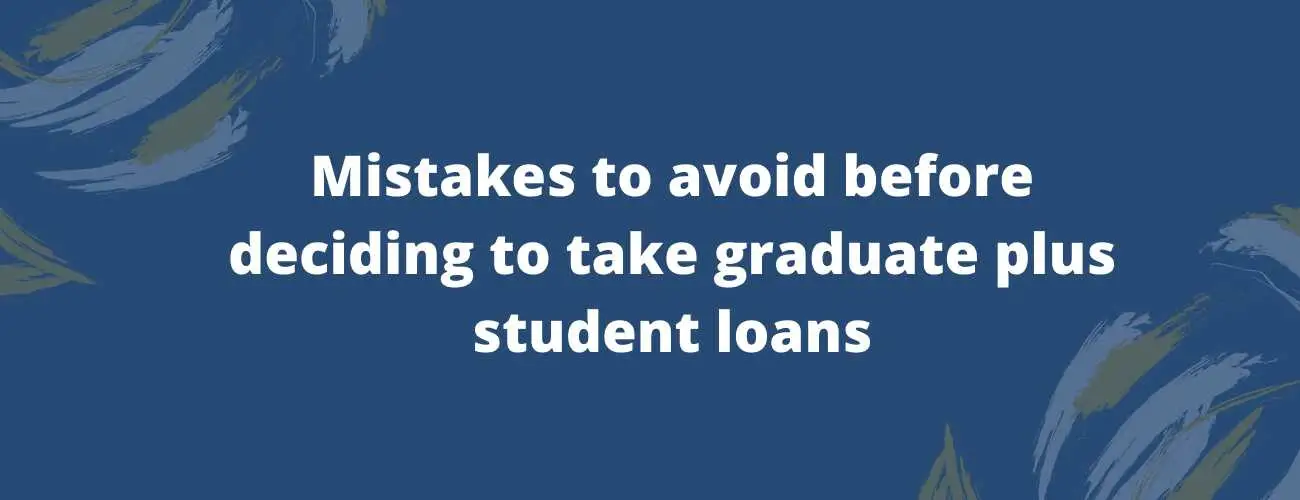Need Based Financial Aid For Students - all you need to know
Need Based Financial Aid is granted to student based on their or their family's income. In this article, we shall discuss in detail about the types, the requirements, the application process &the best colleges. You can also find out the differences between Need Based & Merit Based Financial Aid here
Updated by Shrestha Dey on 20th February 2020
Financial aid that is granted based on a student’s income or the family’s income is called Need Based Financial Aid. In contrast to other financial aid programs, Need Based Aid is solely dependent on the income level of the student or their family. Need based financial Aid is awarded by the federal government, state government and by institutions where the student is enrolled or will enroll. The eligibility for Need based financial aid is solely determined through the Free Application For Federal Student Aid, commonly known as FAFSA. In this article, we shall discuss in detail about the different types of Need Based Financial Aid, the eligibility criteria, the application procedure and more.
Table of Contents
- Types of Need Based Financial Aid
- Requirements for Need Based Financial Aid
- Application Procedure for Need Based Financial Aid
- Best Colleges for Need Based Financial Aid
- Need Based Financial Aid V/S Merit BasedFinancial Aid
Types of Need Based Financial Aid
Need Based Financial Aid package is put together by a student’s college. The package could be a mix of Federal, Institutional, Private and State sponsored aid.
Mainly, Need Based Financial Aid are of the following types:
Federal Pell Grant
Pell Grant is awarded to undergraduate students to afford college hailing from low-income families. The eligibility of a student for Pell Grant depends upon the information provided in the Free Application For Federal Student Aid, commonly known as FAFSA.
The maximum award for Pell Grant Changes every Year. For the 2019-2020 session, the maximum award was $6195Every student eligible for Federal Pell Grant receives at least 10% of the maximum award depending on their financial need.
Eligibility Criteria For Pell Grant:
-
Pell grant is eligible only for undergraduate students
-
In case of a student pursuing a second undergraduate course after completion of a previous undergraduate course, they will not be eligible for Pell Grant
-
The student must be a citizen of the United States of America
-
Pell grant is eligible for students enrolled in Post Baccalaureate programs/ certification to become a teacher
-
Students whose parents have been killed in Iraq or Afghanistan post 9/11 are eligible to apply for Pell Grant
It is important to note that undergraduate students who have been incarcerated or have a civil commitment post completion of incarceration on charge for a forcible or non forcible sexual offence are not eligible for Pell Grant.
Another important point to note is that part time students will be awarded lesser grant than a full time student.
Calculation of Pell Grant
Pell Grant is calculated basis Expected Family Contribution (EFC), Cost of Attendance (COA) and Financial Need.
EFC is calculated by FAFSA basis a student’s income and assets if they are independent, parents’ income and assets if the student is dependent, the family’s household size and the other family members that are attending post secondary colleges excluding the parent or parents. It is important to note that the amount of Pell Grant Award decreases as the EFC increases.
COA is the amount that it will cost the student to go to school i.e., it includes tuition fees, boarding, books, supplies, transportation and more.
Financial Need is the difference between the school’s Cost of Attendance (COA) and Expected Family Contribution (EFC) .
It is important to note that the COA might vary from college to college but the EFC remains constant.
Repayment
Grants, unlike loans do not have to be repaid. But there’s a catch to it. If a student shifts to a part-time course from a full time course for which they were awarded a Pell Grant, the financial aid amount will be reduced and the student will have to repay the amount that has already been awarded. In such cases, the school notifies the student and they have to repay the amount within 45 days from the day of notification.
Federal Supplemental Educational Opportunity Grant (FSEOG)
Federal Supplemental Educational Opportunity Grant, also known as FSEOG is awarded to students in need of substantial financial need who are enrolled in a degree program.
The amount awarded to students under FSEOG can range anywhere between $100 to $4000 depending on the information provided by the student in FAFSA. The grant can be provided either by cheques or directly by the school. 75% of the award is provided by the federal government while the remaining is provided by the college. It is important to note that the remainder amount is a variable and can vary from school to school and academic year to year. Unlike Pell Grant, FSEOG cannot be awarded to every student in need. FSEOG is on first cum first serve basis. Hence, it is important for the student to apply for FSEOG as early as possible.
Eligibility Criteria for FSEOG:
-
A student must be enrolled in a degree program in order to be eligible for Federal Supplemental Educational Opportunity Grant
-
In order to be eligible for FSEOG, a student mustn’t hold a previous bachelor’s degree
-
The student must be a citizen of the United States of America
-
The college/ school that the student is applying to must be accredited
-
The students needs to be in substantial financial need
-
Students who are already eligible for Pell Grant and have the most financial need.
-
Students with low EFC are eligible for FSEOG
It is important to note that defaulters of any other federal or private loan are not eligible for FSEOG. Another important point to note is that drug convicts are not eligible for FSEOG.
Repayment :
While under normal circumstances FSEOG needn’t be repaid, there are exceptions always:
-
If a students withdraws early from an undergraduate program that they had enrolled for, they have to return the partially repay the grant
-
If a student receives additional grants / scholarships which helps in reduction of their financial need, the amount for FSEOG for that particular student can be reduced
-
If there is a change in the enrollment status of the student, a part of the FSEOG has to be repaid to the federal body.
Federal Work-Study Program
Federal Work-study program previously known as the College Work-Study Program is a federally and sometimes state funded financial aid program designed to assist students with financial need to pursue post secondary and post graduate education. The FWS program helps students financially through their part-time jobs. Not all colleges have FWS programs. Around 3400 colleges have FWS programs.
There is no maximum amount of a FWS, while the minimum FWS amount awarded is $7.25 per hour. The average FWS amount awarded to a student is $1550 which covers upto 16% of the public tuition and fees.
Eligibility Criteria for FWS:
In order to be eligible for FWS, the student must fulfill the following Criteria:
-
The student seeking FWS must apply for it through FAFSA. There is an option for FWS in FAFSA and the student must check that box
-
Both Undergraduate and Postgraduate student are eligible to apply for FWS
-
The hourly wages of the student seeking FWS should not be less than the federal minimum wage.
-
The student should be a citizen of the United States of America ,U.S. nationals including natives of American Samoa or Swains Island and people having Permanent Resident Card (PRC)
-
FWS is eligible for refugees, human trafficking victims, T-visa holder or child of a T-1 visa holder, asylum grantees, Haitian-Cuban entrants whose citizenship status is still pending
How does FWS actually work?
Just because a student is eligible for FWS, doesn’t guarantee an on campus work-study job. Sometimes, when a student cannot find an on campus work-study job , they have to venture out of campus to secure the same number of hours as their FWS award amount.
The FWS amount awarded to a student might be as high as $4000 but that doesn’t mean the student will get $4000. In order to earn that $4000, the student has to find a job and secure enough hours that equals the FWS amount awarded to them.
In case the student cannot find a job that secures the hours that equals the FWS amount awarded, the student can find other jobs to equalize their work hours with the FWS award.
Repayment:
Since Federal Work-Study is a Need-Based Financial Aid and not a loan which the student earns by working an equal number of hours, it doesn’t need to be repaid.
Institutional Grants
Unlike federal grants, institutional grant is the money awarded to a student by their own college or university. These grants are awarded to incoming students as well as students already studying in those particular colleges or universities.
It is important to note that the amount varies from college to college. Some schools/ colleges have more institutional aid than rest depending on the amount the college has put aside for such programs. Sometimes it is not the college which provides the grant or scholarships. It is sometimes an alumni who can sponsor the institutional grant and aid the need based student via the college.
Eligibility Criteria for Institutional Grants:
-
Students in need of financial aid have to apply through FAFSA for federal grants. A student can request his FAFSA application be sent to schools where they will be applying to. These schools will use the information provided in the FAFSA to determine a student’s total financial aid package.
-
Some colleges and schools require a student to have a CSS profile. CSS profile stands for College Scholarship Service profile. Unlike federal aid, CSS profile is for the non federal and private aid. CSS profile helps the colleges / universities understand the family’s income at an in-depth level.
-
There are 2 types of institutional grants - need based & merit based. While need based is dependent upon personal & family’s income, merit based is dependent upon merit of a student in terms of academics, achievements, extra curricular activities etc.
Repayment:
No repayment is required for institutional grants since it is a grant and not a loan.
State Grants
State grants are awarded by the domicile state of the student and the terms & conditions for state grants vary from state to state.
Eligibility Criteria for State Grants:
In order to be eligible for State Grants, the borrower needs to meet the following criteria:
-
Students applying for state grants should be a citizen of the United States of America
-
Students need to apply with FAFSA and request their application be sent over to the federal state bodies
-
The state provides grants based on both need -based and merit-based
-
The student must have completed or enrolled in senior high in order to apply for State Grants
-
Some states have their own application forms which is to be filled up by students in order to be considered for state grants eligibility
-
Another important criteria is that the student must apply to colleges in their respective domicile states. However, there are always exceptions.
Repayment
Since it is a grant and not a loan awarded by the domicile state, it doesn’t require any repayment
Direct Subsidized federal student loans
Direct subsidized loan is a government loan and is the most cost-effective loan awarded by the federal govt for undergraduate studies. Direct subsidized student loans are awarded purely basis the financial need of the student or the student’s family income and hence are the most difficult to get.
Explore more Federal Student Loan options
Eligibility Criteria for Direct Subsidized Student Loans:
-
Only students who have filled up FAFSA are eligible for direct subsidized loans
-
Another important requirement is a demonstrated financial need : the government will assess the family’s income and assets in order to decide on the amount of the loan
-
The student must be pursuing undergraduate studies
-
The student applying for direct subsidized loans must be a US citizen or a permanent resident or an eligible non-citizen
-
Students applying for direct subsidized loan must have a high school degree or certification
-
The student must be enrolled half time in an eligible degree program in order to be eligible for direct subsidized loan
Repayment:
Unlike grants and scholarships, direct subsidized loan have to be repaid. But, the repayment procedure is quite simple as compared to other loans. The interest rate for Direct Subsidized Student Loans is fixed at 4.53% for undergraduate students and 6.05% for graduate students.
The government pays the interest for students who attend school at least half-time, during the grace period which is of 6 months and during authorized deferment periods.
The interest starts accruing on the principle balance of the loan only after the grace period and doesn’t accrue during deferment period.
Worried about your college tuition? Find the best student loans here
Requirements for Need Based Financial Aid
Following are the requirements for Need Based Financial Aid
-
Students applying for Need Based Financial Aid must be a citizen of the United States Of America
-
Students applying for Need Based Financial Aid must be a US national or a Permanent Resident of USA with a valid social security number
-
In order to apply for Need Based Financial Aid, the student must either have a GED certificate or should have completed their secondary education
-
Student should be enrolled or eligible to pursue post secondary degree
-
Student must apply for financial aid through Free Application For Federal Student Aid (FAFSA)
-
Student must maintain a certain GPA inorder to be eligible for any Need Based Financial Aid
-
A student must complete their degree in a specified time frame
-
A student applying for Need Based Financial Aid must receive a certain percentage of attempted credits
-
In case of a student seeking institutional grant, the student must create a CSS profile.
Application Procedure for Need Based Financial Aid
A student seeking a need based financial aid must submit the FAFSA on time. A student wanting to pursue an undergraduate degree in colleges should start filling up the form as soon as the forms are available. The forms for the next session starts becoming available when the students are in their senior high. Students can send this form to several schools so that the schools can start preparing financial aid packages which will be received by the student only when they join a particular school for a certain program.
Students applying for need based financial aid needs to submit their parents’ tax information for FAFSA. Students who want to pursue post secondary education and are independent need to produce their own tax information for the FAFSA.
Best Colleges for Need Based Financial Aid
Almost 80% American College students receive some kind of financial aid, be it grants, scholarships or work study. Below is the list of top 10 best colleges for Need Based Financial Aid
Bowdoin College
Situated in Brunswick, Maine, Bowdoin College has around 1800 students. The annual tuition for Bowdoin is $53418 and the average undergraduate need based aid is $48856 for all first year students. The share of undergraduates with loans is 27%.
Vanderbilt University
Vanderbilt university is situated in Nashville, Tennessee and has a population of 6800 students. The annual tuition fee of Vanderbilt is $50800 and the average undergraduate need based aid is $49614. The share of undergraduate students with loans is at 21%
Washington University
Washington university in St. Louis has a around 7751 undergraduate enrollment. The annual tuition fee of Washington University is $54250 and the average undergraduate need based aid is $47335. The share of undergraduate students with loans is at 27%
Princeton University
Princeton University situated in New Jersey has 8000+ students. 60% of Princeton students receive financial aid. The annual tuition fee is $47140 and the average undergraduate need based aid is $51365. It is interesting to note that the need based aid is higher than the annual tuition fee. Only 18% of students have student loans.
Yale University
Situated in Connecticut, Yale University has 5532 students. The annual tuition fee of Yale is $55500 and the average undergraduate need based aid is $56602. Interestingly , the need based aid is higher than the annual tuition fee. Only 16% of students share student loans which is the lowest amongst all the universities.
Rice University
Rice university in Houston,Texas has a population of nearly 4000 undergraduate students. The annual tuition fee is $48330 and the average undergraduate need based aid is $43174. Nearly one fourth of the total undergraduate population takes up student loans i.e., 24% of the students share loans.
Grinnell College
Located in Iowa, Grinnell College has a population of just over 1700 students. The annual tuition fee of Grinnell college is $53872 and the average undergraduate need based aid is $ 43783. The loan share of students of Grinnell is 60%
Thomas Aquinas College
Thomas Aquinas College situated at Santa Paula, California has a population of only 400 studenta. The annual tuition fee is $25600 and the average undergraduate need based aid is $ 14552. The share of undergraduates with loans is 73% i.e., more than two-third of the college population takes up student loans
Vassar College
Vassar College in Poughkeepsie, New York is home to nearly 2450 plus undergraduates. The annual tuition fee is $54410 and the average undergraduate need based aid is 49190. 49% students of Vassar College takes up loan which is almost half of the student body
Gettysburg College
Gettysburg college in Pennsylvania has a population of around 2400 plus students. The annual fee of Gettysburg is $56390 and the average undergraduate need based aid is $37831. Around 64% of the college population takes up student loans.
Need Based Financial Aid V/S Merit Based Aid
A lot of colleges and states offer financial aid based on Need and Merit. Need based and Merit based are two different types of financial aid, the difference between which have been discussed below:
-
Need Based Financial aid is awarded to a student by the government. Whereas, Merit based Financial Aid is either awarded by the College or by private sponsors
-
Need based Financial Aid is dependent on the parents’ / family or the student’s income whereas Merit based Financial Aid is independent of the parents’/ family or the student’s income
-
Need based Financial Aid is awarded every year tio a student till they complete their course. Whereas, merit based Financial aid is mostly (there are exceptions) awarded on a one time basis
-
Need based financial aid is awarded based on the demonstrated financial need by the student. Whereas, merit based financial aid is awarded to a student based on their academics or other merits
-
Need based financial aid can be awarded in the form of grants, scholarships, loans, work study positions et al.. Whereas, Merit based financial aid can only be awarded in the form of grants and scholarships
Conclusion
Apart from just being a financial aid, need based financial aid is also a motivating factor for students who want to pursue higher education but back down because of financial constraints. Need based financial aid is a great way to pursue post secondary academics. It is, however, always advisable that a student does their due research and reaches out to the concerned federal body for better guidance about the process.



93.jpg)


28.jpg)
